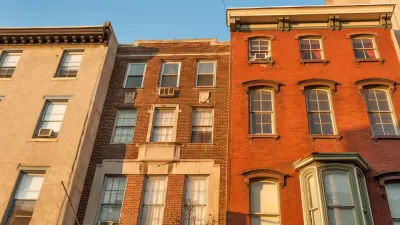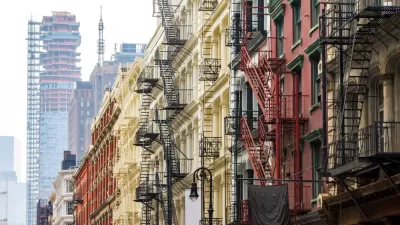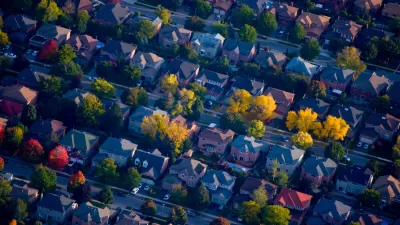Density isn't always a dirty word, apparently—as residents of Utah have voiced their support of more urban typologies to support its expected population growth over the next several decades.
Tony Semerad reports on the ongoing planning work of Envision Utah—an innovative process that will plan for a doubling of population in the state over the next 35 years—most of which will live in a strip of land known as the Wasatch Front.
According to Semerad, current trends point to toward more urban pattern:
Today, Utah's population centers are in the midst of an unprecedented building boom for apartments, while average lot sizes for single-family homes continue to shrink. New, more dense and walkable suburban commercial centers and transit-oriented developments are popping up across the valley. And the stage is set for added municipal funding of a variety of public transportation projects.
The trends in development and investment are backed up by the public. Two recent polls found widespread support for urban arrangements to support the state's growth: "More than three of every four residents support having a mix of housing options in their communities, and they want neighborhood designs that encourage walking, public-transit use and shorter daily drive times, according to one Envision Utah poll."
Residents of Utah consider these types of communities as essential to ensuring the affordability of housing in the future. The article includes more details about the polls.
FULL STORY: Utahns want mix of housing, neighborhoods designed to cut driving

Planetizen Federal Action Tracker
A weekly monitor of how Trump’s orders and actions are impacting planners and planning in America.

Chicago’s Ghost Rails
Just beneath the surface of the modern city lie the remnants of its expansive early 20th-century streetcar system.

San Antonio and Austin are Fusing Into one Massive Megaregion
The region spanning the two central Texas cities is growing fast, posing challenges for local infrastructure and water supplies.

Since Zion's Shuttles Went Electric “The Smog is Gone”
Visitors to Zion National Park can enjoy the canyon via the nation’s first fully electric park shuttle system.

Trump Distributing DOT Safety Funds at 1/10 Rate of Biden
Funds for Safe Streets and other transportation safety and equity programs are being held up by administrative reviews and conflicts with the Trump administration’s priorities.

German Cities Subsidize Taxis for Women Amid Wave of Violence
Free or low-cost taxi rides can help women navigate cities more safely, but critics say the programs don't address the root causes of violence against women.
Urban Design for Planners 1: Software Tools
This six-course series explores essential urban design concepts using open source software and equips planners with the tools they need to participate fully in the urban design process.
Planning for Universal Design
Learn the tools for implementing Universal Design in planning regulations.
planning NEXT
Appalachian Highlands Housing Partners
Mpact (founded as Rail~Volution)
City of Camden Redevelopment Agency
City of Astoria
City of Portland
City of Laramie





























